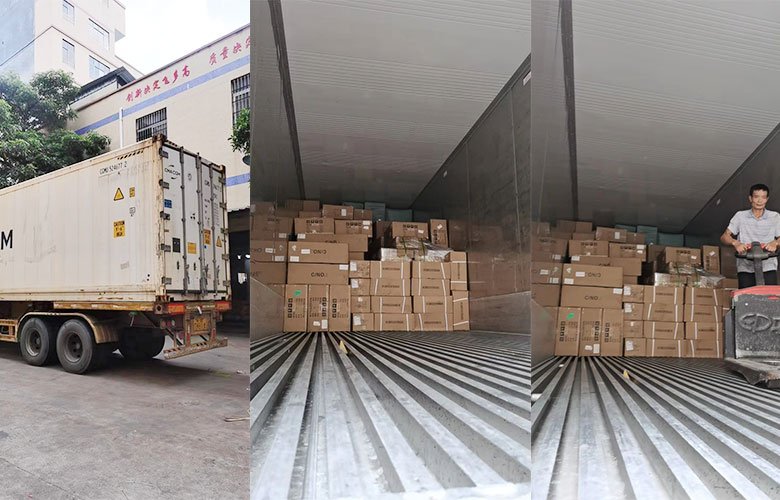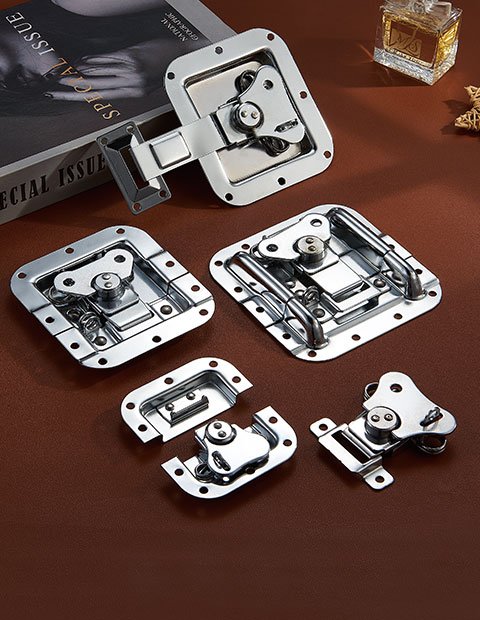Whether you are just beginning your hardware trading business or already have a well-established box and case factory, this blog will help you purchase and transport your valuable hardware at the lowest possible cost.
Minimize costs and be aware of hidden fees by learning how to import box and case hardware from China. You will also know where and how to find high-quality, durable case hardware products guaranteed to fit your branding. This blog will guide you on finding the best suppliers in China, what freight shipping methods are best suited for your business, and how to import them into your country without paying hidden fees, including taxes and customs.

Table of Contents
Step 1: Select Products to Import
To start or grow your case hardware business, you must first understand what case and hardware accessories you want to sell.
To find wholesale products from China, you can do so by using directories such as Alibaba, GlobalSources, Made-in-China, and AliExpress, or by conducting a Google search for suppliers. This will provide you instant access to thousands of manufacturers, no matter where you are in the world.
Specify the following information when searching for products:
- Product’s name
- brand
- Price
- Material
- Quantity
- Color
- Weight
- Thickness
- Dimensions
- Other specifications
Always remember to include product details with as much specificity as feasible. When it comes time to speak with a supplier, save an image of your perfect product to avoid misunderstandings (more on that in the next step).
In addition, the following five processes will help you identify exactly the BEST goods to provide for your company:
- Sign up for various hardware factory newsletters to keep abreast of the latest trends in boxes and cases, get ideas for new hardware to furnish, come up with fresh concepts to modify for your box and case company, and always have merchandise to sell! There’s no need to be an inventor to create the newest, greatest box and case of 2024. Never hesitate to draw inspiration from other people. You can keep up with your competitors’ actions by subscribing to newsletters and other brands. This will enable you to create superior and unique box and case items that set yourself apart from the competition.
- Look for goods that aren’t available in the stores around you. Make your imports from China worthwhile by purchasing the goods that are difficult to find in your region or nation. Discover a need that consumers haven’t been satisfied by, and your company will be the first to introduce it to the community.
- Look through the Facebook advertising library to find the product advertisements of rival companies. If the product does well on Facebook, it is likely in demand and you will be able to benefit from the import of it into your country from China.
- Use the search function on Amazon to locate comparable items. Amazon displays the total quantity sold. This data can be used to determine which products are profitable and which are not.
- Pay attention to when the products of the rival are consistently out of stock. This indicates that your target market values the product highly. Analyze favorable evaluations and interaction (likes, shares, comments) in response to demand. To determine what to acquire and what to improve upon, consider the features that the competitor’s product does not have.
Step 2: Look for Box and Case Hardware Wholesalers in China
It’s time to choose a dependable and knowledgeable Chinese supplier when you’ve determined which box and case hardware to import that will be lucrative. Since not all Chinese businesses have expertise exporting, use the following procedures to identify trustworthy suppliers:Please refer to the article “Top 10 Reliable Flight Case Hardware Manufacturers in China”
Find a Chinese supplier by following these three simple steps:
- Find suppliers and direct manufacturers through Alibaba, Global Sources Exhibitions, or directories. Alibaba has a more straightforward process and offers packages at a lower price because there are no middlemen. There, you can find an assortment of wholesale box and case hardware. However, even though Alibaba has more suppliers, the products are usually lower in quality, and the whole process could take weeks. Meanwhile, you can find high-quality vendors through the Global Sources Exhibitions, but it comes with higher MOQs (Minimum Order Quantity).
- There are more options than Alibaba and Global Sources Exhibitions. Do background research on corporations. Compare the reliability, experience, certifications, values, prices, and services of different manufacturing companies that offer the box and case hardware in your brand by searching for the product and exploring Google.
- When you’re ready, send an email or a simple message. Call them, use Facetime, or book a video call. Connect and build a relationship. You will know better when you communicate through calls than with texts. By calling, you can ask your questions and receive immediate feedback. See where they’re working (do they work from their basement, or do they have a real company?). Identify if you like and agree with the supplier’s attitude and values. Find a company you want to build long-lasting, meaningful partnerships with.
Use these methods to find a list of potential suppliers. They may have a trading company or a factory manufacturer. Analyze the pros and cons of factories and trading companies:
Step 3: Request Quotes and Review Items
Request product samples, a quote, and information about the manufacturing facilities from the supplier you discover. In order for you to evaluate the caliber of the goods, they ought to be prepared to supply them.
While cost is crucial, be sure the product is of a caliber that allows you to stand by it with assurance.
Additionally, you can request that your manufacturer or supplier customize the box and case hardware you need, but unless the quantity you require is sufficiently large, you may have to pay an additional mold cost.
Step 4: Classify and Calculate Costs
Once you have a product, give it a tariff classification code. This can help you determine the import duty rate.
You calculate the price your consumers will pay to turn a profit by adding this amount to the cost of the product and shipping. Since you generally won’t know the exact amount until you receive your first shipment, estimating these expenditures is essential. By coming as close to the cost as possible, you can avoid losing clients or revenue. After the first shipment, be ready to compare the real cost to the estimate because unexpected charge fluctuations are common.
Step 5: Making a Purchase
Each company has different shipping agreements and minimum orders. The majority of Chinese businesses need minimum orders of 500 pieces.
To begin production, Chinese exporters usually require a deposit of thirty to fifty percent; the remaining amount is required upon delivery.
You have the option of using sea freight, which is more economical and suitable for larger shipments, or carrier airmail, which is quick but pricey for smaller purchases.
You can make shipments as Less than Container Loads (LCL), which share space with other shipments, or as Full Container Loads (FCL), which use an entire shipping container.
If your load is large enough to warrant it, FCL is less expensive. If traveling by sea, give yourself plenty of time to arrive, as delays due to alterations in the vessel’s schedule, hold-ups at customs, and other issues are frequent. Don’t forget to factor in the time required for customs processing and shipping cargo from the manufacturer to the port.
Step 6: Get Ready and Wait for Shipping
Working with a customs broker or asking your supplier for help can streamline the procedure. They will handle all documentation completion and filing, cost estimation, regulatory navigation, and process streamlining.
If you are handling the process yourself, make sure to submit the first import paperwork, which includes the following documents, along with the Import Security Filing, which is essential for marine shipments.
- Packing lists
- Certificate of origin
- Bill of lading
- Customs bond
- Commercial invoice
When the order arrives, be prepared to pay import duties and make arrangements for goods pickup and transportation. As soon as the item arrives, notify your provider and look for any damage.
Importing and selling box and case hardware may be quite profitable, even if the initial procedure can be intimidating. Do your homework well and be prepared for any roadblocks. Work step by step, make connections, and don’t be afraid to seek guidance from others.
Step 7: Make Payments to China
Sending money to China for your supplier is a crucial part of importing.
Most suppliers require an advance payment of 30%-50% before production. Use trusted payment channels and choose among their common payment methods.
It’s recommended to purchase samples first to determine if their payment process is convenient and authentic.
Bottom line
Understanding the necessary steps to import box and case hardware from China ensures your business is successful and sustainable. By following the right procedures, you can invest wisely, maintain healthy sales, and build strong relationships with your suppliers.

